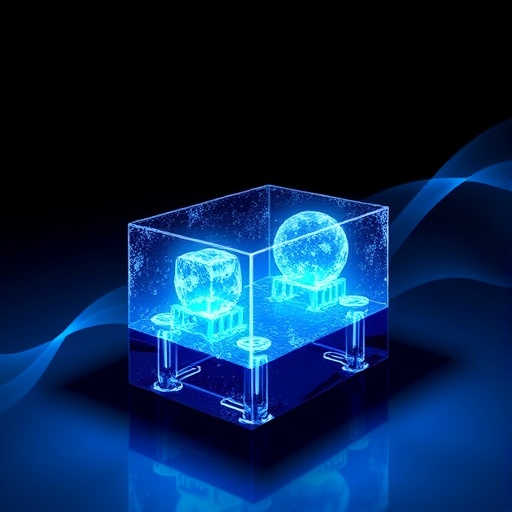Seawater has persistently captivated the scientific community as an abundant, inexpensive, and widely accessible source for electrochemical energy conversion and the synthesis of valuable chemicals. Yet, its complex ionic composition, containing a variety of monovalent and multivalent ions such as sodium (Na⁺), potassium (K⁺), magnesium (Mg²⁺), calcium (Ca²⁺), chloride (Cl⁻), bromide (Br⁻), and sulfate (SO₄²⁻), introduces formidable challenges. These ions often engage in competing side reactions, facilitate the formation of precipitates, and cause corrosion, complicating efficiency and durability of electrolytic systems. This paradigm has long led researchers to consider these ions as impediments, necessitating approaches to suppress or remove their effects.
Recent investigations, however, herald a significant shift in perspective. Instead of deeming these ions problematic, contemporary research emphasizes their deliberate and advantageous incorporation through tailored system designs. This emerging approach involves exploiting the intrinsic properties and interactions of these ions to enhance electrochemical operations, effectively transforming erstwhile liabilities into assets. The recognition that ion-specific effects can be harnessed to improve catalyst performance and electrochemical stability marks a pivotal development in seawater electrocatalysis.
Central to this evolution is an in-depth exploration of chloride ion (Cl⁻), a dominant and reactive species in seawater. Innovations targeting chloride utilization encompass advanced electrolyte optimization and strategic design, as well as implementing direct adsorption techniques to improve catalytic site activity. Understanding how Cl⁻ participates in or influences anodic reactions such as chlorine evolution underscores the opportunity for integrating chloride into productive reaction pathways, thereby increasing the economic and operational feasibility of seawater electrolysis.
Complementing this, sodium ions (Na⁺) have garnered attention for their potential beyond simple charge compensation. Cutting-edge cell architectures demonstrate how asymmetrically designed electrolyzers and the emerging concept of aqueous alternating strategies can exploit sodium dynamics. These methodologies manipulate ion transport and local concentration gradients to favor desirable electrochemical processes, mitigating deleterious side effects associated with conventional uniform ion distributions. Harnessing Na⁺ thus represents a novel frontier for modulating electrode environments and reaction kinetics.
Divalent cations, chiefly magnesium (Mg²⁺) and calcium (Ca²⁺), substantially influence the local pH and ion transport characteristics within the electrochemical interface. Their presence can stimulate the formation of protective surface layers or affect ionic mobility, thereby creating microenvironmental conditions conducive to selective reactions. Strategic pH regulation and the application of force-repelling mechanisms have proven effective in leveraging these ions to promote the co-synthesis of hydrogen gas alongside valuable magnesium hydroxide, Mg(OH)₂, directly from seawater. This dual functionality not only improves resource efficiency but also opens pathways for integrated chemical manufacturing.
Beyond ion-specific effects, innovations in materials science play a crucial role in transforming seawater electrolysis technology. Tailored catalysts exhibit selective ion adsorption behavior, effectively discriminating between useful and interfering ions to stabilize catalytic sites and enhance reaction selectivity. Similarly, engineered catalyst supports and membranes regulate ion flux and distribution, mediating the electrochemical milieu to improve both rate and durability of electrolytic processes. Such materials-driven advances represent the linchpin of next-generation seawater electrocatalytic systems.
Moreover, coupling electrocatalysis with complementary techniques like ion exchange and separation significantly amplifies performance metrics. By integrating these steps, systems can preemptively remove scale-forming or harmful ions or selectively recover valuable elements, thus creating multifunctional platforms that reconcile seawater’s complexity with industrial-scale operational demands. These hybrid approaches underscore the necessity of interdisciplinary strategies to address the multifaceted challenges inherent in seawater processing.
Particularly intriguing are the emerging routes toward extraction of critical and scarce resources from seawater, including uranium and lithium. Through innovative electrode modifications and optimized cell configurations, electrochemical platforms can selectively adsorb and concentrate these metal ions, presenting a sustainable alternative to conventional mining. The development of high-affinity adsorbents and tailored electric fields illustrates the potential for seawater to serve as a future resource reservoir, aided by advances in electrocatalysis and separation science.
Despite these breakthroughs, significant scientific and engineering challenges remain. A profound understanding of ion-catalyst interaction mechanisms, especially under realistic seawater conditions, is still in its infancy. Consequently, the development of comprehensive models and advanced characterization tools is imperative for deciphering the intricate interfacial phenomena dictating system behavior. Bridging lab-scale innovations with real-world system integration requires scalable engineering solutions capable of enduring complex environments over extended operational durations.
Ultimately, this evolving discipline advocates a fundamentally new approach: moving beyond suppression of adverse ionic effects to actively leveraging them within the design framework. By embracing the complexity of seawater’s ionic matrix, researchers envision a sustainable, cost-effective paradigm for seawater electrocatalysis that not only optimizes hydrogen production but also contributes to the synthesis of diverse value-added compounds. This vision aligns with broader goals of circular economy and environmental stewardship, positioning seawater as a transformative feedstock in the global energy and chemical landscape.
In summary, the state-of-the-art in seawater electrocatalysis underscores a paradigm shift replete with innovative strategies that co-opt multivalent and monovalent ions for enhanced performance. From material design to system configuration and resource recovery, these integrated approaches exemplify the synthesis of fundamental science and applied engineering. The trajectory set forth by these efforts opens compelling prospects for sustainable chemical manufacturing and energy conversion from the Earth’s vast maritime domain.
This comprehensive review outlines a future research agenda that prioritizes elucidating complex ionic interactions, advancing scalable process technology, and fostering interdisciplinary collaboration. The path ahead will unlock the full potential of ion-utilized seawater electrocatalysis, bridging gaps between experimental discovery and practical implementation. The scientific community’s endeavors in this realm will decisively impact the viability of seawater as an electrochemical platform for next-generation energy and material solutions.
Subject of Research: Seawater electrocatalysis and ion-utilized electrochemical conversion
Article Title: Ion-Integrated Strategies for Advancing Seawater Electrocatalysis: From Challenges to Opportunities
Web References: http://dx.doi.org/10.1093/nsr/nwaf461
Image Credits: ©Science China Press
Keywords
Seawater electrocatalysis, chloride utilization, sodium ion harness, magnesium hydroxide co-synthesis, ion-catalyst interaction, electrolyte design, resource extraction, uranium recovery, lithium recovery, catalyst modification, electrochemical energy conversion, ion flux regulation




